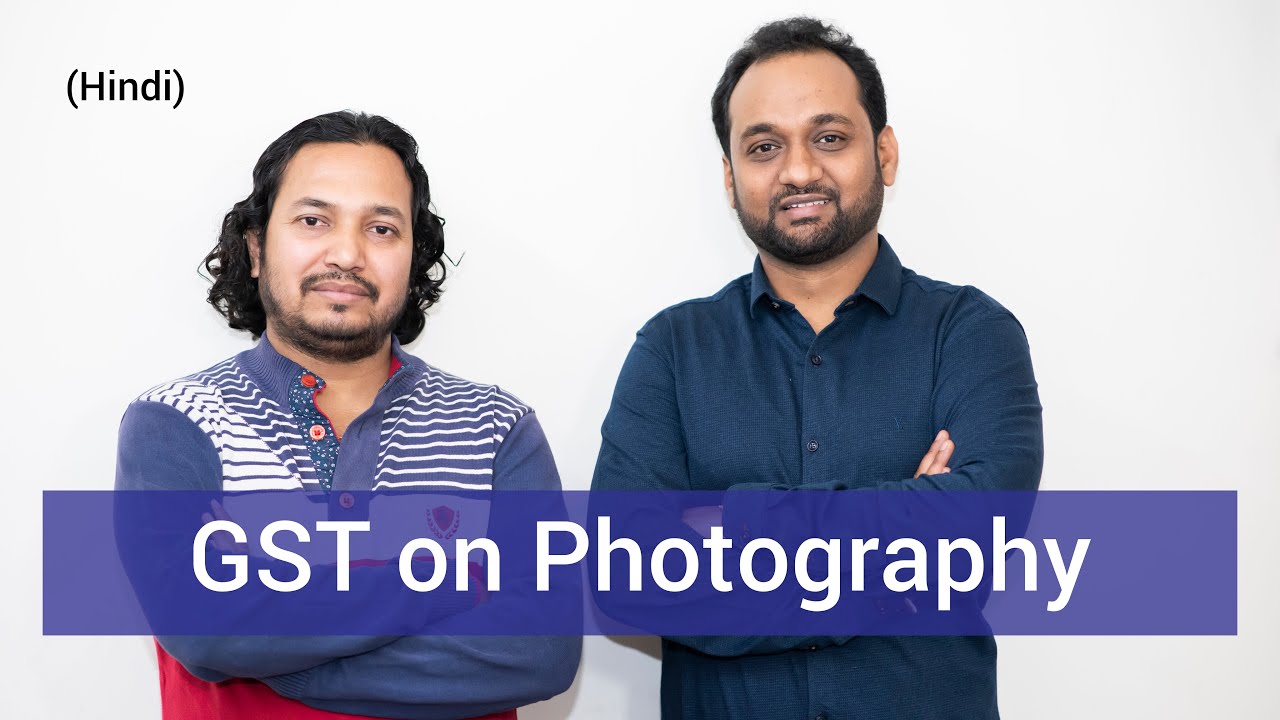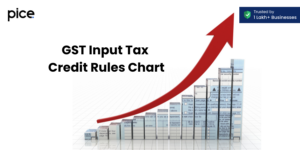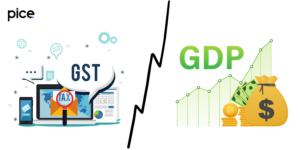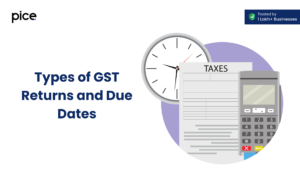GST Rate for Photography and Videography Services
- 20 Aug 24
- 11 mins

GST Rate for Photography and Videography Services
Key Takeaway
- Photography and videography services in India are subject to an 18% GST rate, ensuring uniform tax application across different service types.
- Photographers with annual turnover exceeding ₹20 lakhs (₹10 lakhs for special category states) must register for GST to comply with tax regulations.
- Correct use of SAC codes like 998314 for event photography and 998316 for commercial photography ensures accurate billing and tax compliance.
- GST registration allows photographers to claim input tax credits on business-related purchases, reducing overall tax liability.
- Digital cameras, video camera recorders, and related photographic equipment attract an 18% GST rate, impacting final consumer prices and business margins.
Photography and videography services have become integral parts of both personal and professional events. Understanding the GST rate for these services and the associated goods is essential for professionals and consumers alike.
GST Rate for Photography Services
Photography services, encompassing a variety of professional offerings, are subject to a specific GST rate under India's Goods and Services Tax regime. These services include event photography, portrait photography, commercial shoots, and retouching services, among others. Understanding the GST rate applicable to these services is crucial for photographers and consumers alike.
Standard GST Rate
The GST rate for photography services, including event photography services, retouching services, and commercial photography, is set at 18%. This rate ensures uniformity across different types of photography services, making it easier for professionals to comply with tax regulations.
Applicable Services
- Event Photography Services: This includes photography for weddings, birthdays, corporate events, and other personal or professional gatherings. The comprehensive nature of event photography services often involves both capturing and editing images, all of which fall under the 18% GST rate.
- Portrait Photography Services: Professional portrait photography, whether for personal use or business purposes, is also subject to the 18% GST rate. This includes studio portraits, family photos, and individual portraits.
- Commercial Photography Services: Services provided for commercial purposes, such as advertising, fashion photography, and product shoots, attract the same GST rate. This ensures consistency in tax application across various commercial photography activities.
- Retouching Services: The post-production process, including image retouching and editing services, is also taxed at 18%. This covers any enhancement or modification of photographs as part of the overall photography service package.
Benefits of GST Compliance
Adhering to the GST regulations provides several benefits for photographers:
- Input Tax Credit: Photographers can claim input tax credits on purchases related to their business, such as cameras, lenses, and other photographic equipment. This reduces the overall tax burden.
- Professional Credibility: Being GST compliant enhances the professional credibility of photographers, especially those dealing with corporate clients and large-scale events.
- Ease of Business Operations: Proper GST registration and compliance streamline business operations, reducing the risk of legal issues and penalties.
GST Registration for Photographers

GST registration is an important step for photographers in India to ensure compliance with Goods and Services Tax laws. This registration not only legitimizes their commercial operations, but also enables photographers to claim input tax credits and broaden their professional horizons. Here’s a comprehensive guide on GST registration for photographers:
Who Needs to Register?
Photographers providing services with an annual turnover exceeding ₹20 lakhs (₹10 lakhs for special category states) are required to register for GST. This threshold includes all income from photography services such as event photography, portrait shoots, retouching services, and commercial projects. Freelance photographers and those operating small studios must also adhere to this requirement if their earnings surpass the specified limit.
Steps for GST Registration
Visit the GST Portal: Start by visiting the official GST portal.
Fill out the registration form: Click the 'Services' button, then 'Registration', and finally 'New Registration'. Fill out the form with information such as the legal name of the business, PAN card, email address, and mobile number.
Receive OTP: An OTP will be delivered to the entered email address and mobile number for verification. Enter this OTP to proceed.
TRN (Temporary Reference Number): Following verification, a TRN will be generated. Use this TRN to finish the registration procedure.
Fill out Part B of the Registration: Log in with the TRN and provide other information such as the business address, bank account information, and nature of the business. Upload any relevant documents, such as proof of business address, bank account statements, and pictures.
Submit the Application: After filling out all of the information and uploading the documents, submit the application. You will be given an ARN (Application Reference Number) that may be used to follow the status of the application.
Receive GSTIN: Upon successful verification, you will receive a GSTIN (Goods and Services Tax Identification Number), which confirms your registration under GST.
Documents Required

- PAN Card: The primary identification for the business.
- Aadhaar Card: Identity and address proof of the proprietor.
- Business Address Proof: Rental agreements or property ownership documents serve as proof of business address.
- Bank Account Information: A copy of a bank statement or a canceled check.
- Photograph: A recent photograph of the proprietor or partners.
Benefits of GST Registration
Input Tax Credit: Registered photographers may claim input tax credits for GST paid on business-related purchases such as cameras, lenses, photographic flashlight apparatus, and other equipment. This helps to lower the total tax liability.
Legal Compliance: GST registration ensures that you comply with Indian tax regulations, avoiding penalties and legal complications. It also improves the business's credibility and professionalism.
Business Expansion: Registered enterprises can readily expand their operations between states, delivering services without the complexities of several state taxes. This is especially useful for event photography services that may include travel.
Being GST-registered might provide a competitive advantage, since many clients prefer dealing with registered firms due to the transparency and dependability they bring.
💡If you want to pay your GST with Credit Card, then download Pice Business Payment App. Pice is the one stop app for all paying all your business expenses.
SAC Code for Photography & Videography Services
Service Accounting Code (SAC) is a unique code system developed by the Central Board of Indirect Taxes and Customs (CBIC) to classify services under the GST regime in India. For photography and videography services, specific SAC codes help categorize the services correctly, ensuring the proper application of GST rates. Knowing the relevant SAC codes is essential for photographers and videographers to ensure accurate billing and compliance with GST regulations.
Key SAC Codes for Photography & Videography Services

| SAC Code | Description |
|---|---|
| 998314 | Event Photography Services: This code covers photography services provided for personal events such as weddings, birthdays, anniversaries, and other special occasions. It includes both the capturing of photographs and any associated post-production work such as editing and retouching. |
| 998315 | Portrait Photography Services: This SAC code is used for professional portrait photography services, including studio portraits, family photos, and individual portraits. It encompasses the full range of portrait photography services provided to clients. |
| 998316 | Commercial Photography Services: This code applies to photography services provided for commercial purposes, such as advertising, fashion shoots, product photography, and corporate photography. It covers the creation of visual content for marketing and promotional activities. |
| 998317 | Videography Services: This SAC code is designated for videography services, including event videography, corporate videos, promotional videos, and other video production services. It includes both the filming and editing of video content. |
| 998318 | Other Photography and Videography Services: This is a catch-all category for any other photography and videography services not specifically classified under the other SAC codes. It can include specialized services such as aerial photography, underwater photography, and other niche photography services. |
Importance of Using Correct SAC Codes
Using the correct SAC code is crucial for several reasons:
- Accurate Tax Filing: Ensures that the services are categorized correctly for GST purposes, leading to accurate tax calculation and filing.
- Avoiding Penalties: Misclassification of services can lead to penalties and legal issues. Proper use of SAC codes helps avoid such problems.
- Input Tax Credit: Proper classification enables businesses to claim input tax credits accurately, reducing the overall tax burden.
Example Applications
- Event Photography Services (SAC 998314)
- Example: A photographer hired to cover a wedding would use SAC 998314 for billing and GST filing purposes. The GST rate for these services is 18%.
- Commercial Photography Services (SAC 998316)
- Example: A photographer conducting a fashion shoot for a magazine would use SAC 998316. This ensures that the service is correctly categorized under commercial photography, attracting a GST rate of 18%.
- Videography Services (SAC 998317)
- Example: A videographer creating a promotional video for a corporate client would use SAC 998317. This classification ensures the service is billed and taxed correctly under videography services.
GST Rate for Cameras and Photographic Goods
Understanding the GST rates for various cameras and photographic goods is essential for consumers and businesses. The following table provides a clear overview of the GST rates for different categories of photographic equipment and related goods:
| Item | GST Rate | Description |
|---|---|---|
| Digital Cameras | 18% | Includes point-and-shoot cameras, DSLR (Digital Single-Lens Reflex) cameras, and mirrorless cameras. |
| Video Camera Recorders | 18% | Devices used for recording videos, including professional camcorders and consumer-grade video cameras. |
| Television Cameras | 18% | Cameras used in broadcasting and television production, designed for studio and outdoor broadcasting. |
| Sound Recording Equipment | 18% | Equipment primarily used for audio recording that often accompanies video production, when sold as part of a camera package. |
| Photographic Flashlight Apparatus | 18% | Accessories like external flashes and studio lighting equipment essential for high-quality photography. |
| Instant Print Film | 18% | Used in instant cameras to produce immediate physical photographs. |
| Film in Rolls | 18% | Traditional photographic film in rolls used with analog cameras. |
| Cinematographic Film | 18% | Film used in cinematographic cameras for motion picture production. |
| Cinematographic Cameras | 18% | Cameras designed for recording motion pictures, used in film production. |
| Photographic Film | 18% | Film used in traditional and instant print cameras. |
| Photographic Flashlight Apparatus | 18% | Lighting equipment and accessories used in photography. |
| Unmixed Products | 18% | Raw materials used in the production of photographic goods. |
| Retail Sale | 18% | Sales of photographic goods directly to consumers. |
| Sound Track | 18% | Equipment used for recording audio tracks for film and video production. |
| Form Ready Products | 18% | Products that are ready for use without further processing, such as ready-to-use photographic film and equipment. |
| Special Category Items | 18% | Niche products used in specialized photography and videography, such as underwater cameras and aerial photography equipment. |
| Standard Goods and Services | 18% | General category covering standard photographic goods and services. |
| Event Videography Services | 18% | Videography services provided for personal and professional events, including filming and post-production. |
| Retouching Services | 18% | Post-production services for editing and enhancing photographs. |
| Service Tariff Code | 18% | Classification codes used for categorizing different photography and videography services. |
| Analog Cameras | 18% | Traditional cameras using film for capturing images. |
| Television Cameras | 18% | Cameras specifically designed for television production. |
| Feature Films | 18% | Complete motion pictures intended for cinema or television broadcast. |
| Film Strips | 18% | Sequences of images on photographic film, typically used in education and presentations. |
| GST for Sale | 18% | GST applicable on the sale of photographic goods and equipment. |
| Image Recorders | 18% | Devices that capture and store visual images, such as digital cameras and camcorders. |
| GST Council | 18% | Governing body that determines GST rates for various goods and services, including photographic equipment. |
| Event Photography | 18% | Professional photography services provided for events such as weddings, birthdays, and corporate functions. |
| Rate Tariff | 18% | Tariff rates applicable to various photographic goods and services, ensuring consistent tax application. |
| Video Camera Recorders | 18% | Cameras designed for recording video content, including both consumer and professional-grade equipment. |



















